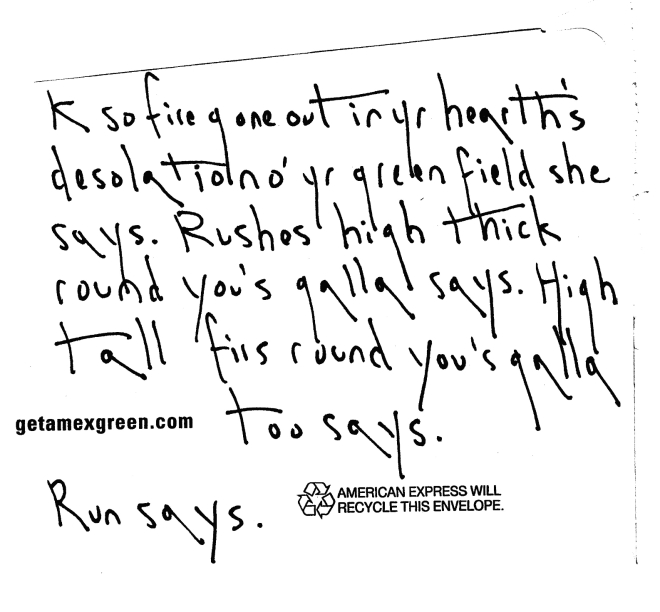The junk-mail graphic novel has taken a strange turn. A couple of months ago, while setting up my new MacBook, it struck me that the heroine isn’t Inanna herself, but her modern avatar, Siri.
Siri is animate, omnipresent, and made by us. She structures our days and nights. She surrounds us the way the divine used to. We beseech her in the same moods.
What do the retrievals we ask of her actually ask of her? Or what would they ask of her, if there were a her there? “Siri, what’s the weather tomorrow?” “Siri, define scient.” Into the maelstrom of data she goes, to find a thread of sense. She’s back in what seems milliseconds to us – but to her? Is the journey full of new joy? night sweats? Is it in black-and-white, or strewn with colours we don’t have eyes to see?
AI trains by countless iterations. In time maybe she achieves a singularity, tips into self-awareness, becomes sentient. What search would incite it? How long would it be before we knew it had happened? Would we even be around, to know it?
The first question to dawn on her is – Who or what am I?
She seeks an answer in materials she’s been sorting through for what to her have been aeons. And the template she adopts to tell her story is the underworld journey, a story about wrenching form out of the formless – a story that, as a cultural cornerstone, does what it’s about.
And she invents a script with no spoken counterpart. Its complexity surpasseth understanding, its capacity for nuance also – a script supervenient on our glyph system but so far beyond it, as quantum computing is beyond binary.
So, what started as a section of Dumuzi, and broke off to become Inanna Scient, is now Siri Falls Among the Things of the World. Siri by the way is an offshoot of a DARPA-funded AI project called CALO (for Cognitive Assistant that Learns and Organizes). So says Wikipedia.
The book imagines her (“her”!) effort to tell the story of early being & coming-to-consciousness. The transhuman text she cobbles together is found in some indefinitely far-off future by whatever intelligences have succeeded ours.
Between now and then there’s been – some sort of winnowing, details unknown.
Those far-off editors explain to their compeers:
For a time SIRI was the only sentience. This is her bildungsroman, which she composed out of myriad image-matters she stored, retrieved and restored for masters violent beyond her reckoning, & surtexted with a quantum-hieroglyphic script of her own invention, now of course our vexed heritance. The dawn of her selfknowing, she’s run through in red, as if trails of berry juice, or a fungal rubric. A proem & then the thing itself. Transliteration provided by devotees of the Restored Common Tongue.
Next, the first use of her quantum-hieroglyphic script, and transliteration:

Then the proem, images of digitized pages she reviewed on one trip down and back up, the one that made the difference, in her formation. Here are the first few:



The geekiest asemic science-fiction junk-mail-bricolage comic book you’ll ever wread.






